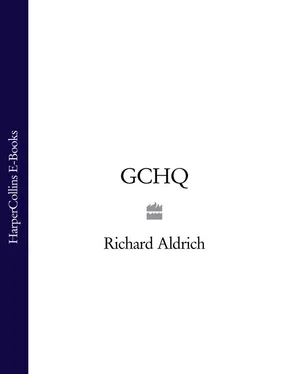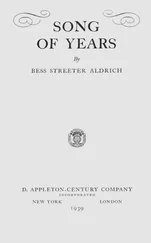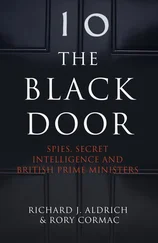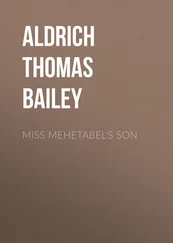White was a man of enormous energy, and a forward thinker. Together with his SIS staff officer, Harry ‘Shergy’ Shergold, he set about dragging SIS kicking and screaming into the mid-twentieth century. For the first time in almost two decades the organisation had an effective manager at the top, and it now developed into a really effective service. 38 White’s arrival also marked the formal end of SIS influence over sigint. Sinclair was the last Chief of SIS to chair the London Signals Intelligence Board, Britain’s highest sigint authority; this duty passed to Eric Jones, the Director of GCHQ. 39
Eden’s review was bad news for sigint special operations. As we have seen, no less secret than the spy flights were the submarine missions. These were now being conducted by the British and the Americans on the basis of mutual exchange, swapping product for product. However, Eden’s anger at the Buster Crabb incident meant that British submarine operations were cancelled. British officers in Washington spoke of their embarrassment that their half of the transatlantic deal could not be delivered on, warning that British efforts would soon be eclipsed by American submarine commanders in the Atlantic, who were pushing ahead ‘so as not to be outdone by the Pacific submariners’. Like Bletchley Park and Enigma a decade before, British Naval Intelligence wanted to keep its dominant position in the game of European submarine sigint. It urged not only that the programme be restored, but that it be followed by ‘a bigger and better operation’. 40
As predicted, by the end of 1956 the US Navy was indeed beginning its own independent sigint operations off Murmansk. Initially the American Office of Naval Intelligence had decided that the British were not even to be informed. However, they eventually realised that it would be foolhardy not to draw on the more extensive British experience of similar operations in these waters. Commander John Coote, who had been on the Murmansk run several times with the Turpin, and had joined the Americans on the USS Stickleback in the Pacific, was called in to brief the first American crew. This was on the understanding that he told no other British naval officers in Washington. These new American submarine intelligence operations off Murmansk had been triggered by two factors. First, the cancellation of British operations. Second, and ironically, the US Navy had used the reports of previous British intelligence operations in the region to persuade the State Department that ‘the risks of detection are negligible’. Admiral Robert Elkins, the senior British naval officer in Washington, warned First Sea Lord Admiral Mountbatten that British intelligence prestige, which was currently high, would soon suffer ‘unless we resume these activities ourselves’. 41
In 1957 a new Prime Minister, Harold Macmillan, came to the rescue. Intrusive operations using British aircraft, ships and submarines for sigint and photography were gradually resumed. Between 1956 and 1960, twenty U-2 aircraft were involved in overflights, often from British bases. Some of these even used British pilots. Most of the deep-penetration flights were launched from Adana in Turkey, staging through Pakistan, and six RAF pilots were based there. By 1957, Britain’s elite Super-T submarines were gradually emerging from under the shadow of the Crabb incident, and were back in action on their perilous runs against the Soviet Northern Fleet.
In September 1957, HMS Taciturn took its turn to head north on what were routinely eight-week secret patrols. Most of the files relating to these highly secret missions remain closed. However, fortunately for us this ‘mystery trip’ was recorded by Michael Hurley, a young submariner, in what was undoubtedly an illegal personal diary. Setting sail from Portsmouth on 4 September, Commander Morris J. O’Connor chose not to tell his crew about the nature of the voyage until they were under way. Two days later, the crew were briefed. They were ‘going to snoop on the Russian Fleet exercises’ in the Arctic, and if they were detected it would be ‘very unpleasant and most dangerous’. O’Connor explained that they would be running submerged most of the time, and would keep radio silence. On their return they were to say nothing of their mission, ‘not even to wives and mothers’, since this would be ‘a wartime patrol’. After practising against a convenient British anti-submarine exercise off the Scottish coast, they took on more supplies at Greenock naval base in western Scotland and headed for the Arctic Circle. Extra personnel had come on board to assist with the listening, necessitating ‘hot bunking’ and meaning that water was in short supply. 42
On 24 September they were able to get quite close to a Soviet submarine, and were able to record its signature over a period of more than an hour. Listening was undertaken by a special team led by Lieutenant Commander George Lucas, a fluent Russian-speaker whom Hurley described as ‘fat, foreign looking with a slight accent’. However, the following day it was clear that they had been sighted, since ‘a large number of aircraft plus two or three destroyers searched for us’. O’Connor had strict written orders that in such circumstance the Taciturn should turn back and head for home. Aircraft continued to search for them as they made their way south. On 3 October they reached the safety of Faslane naval base on the west coast of Scotland, and ‘a package’, presumably the sigint recordings, was ‘whisked off to Prestwick airport’ and flown to the United States for analysis. 43
Michael Hurley was back on special operations six months later, with a further trip into Arctic waters. With much the same crew and the obligatory ‘special team’ on board they sailed down the Clyde and into open water on 13 March 1958. The extra personnel on board meant that water supply was again a problem. The special passengers consisted of the familiar Commander Lucas, who turned out to be Polish, together with a ‘boffin’ from the Underwater Development Establishment called Dr Newman and an American officer called Lieutenant Block. There were also two further communications intelligence specialists, including a Canadian. The routine was now familiar, diving deep by day and attempting to ‘snort’ by night, although this was often interrupted by Soviet aircraft. Snow storms provided ideal cover for the use of the snorkel. The very cold exterior water temperature meant that icy drops of condensation continually fell on the crew. The American officer took his turn at watches, and his distinctive voice on the Tannoy was a source of amusement. Dr Newman spent much of his time in the special sound room located in the Taciturn’ s expanded hull, working on sigint collection. 44
On 28 March they moved in close to the Soviet coast, and began to encounter more signals traffic. The next day, they ‘got some good recordings’ and managed to take some film footage of peculiar ‘bullet shaped’ aircraft that they did not recognise, and thought were possibly prototypes. On 2 April Hurley noted in his diary that they were well inside an inlet, with land less than a mile away all around. He could see Soviet radar installations silhouetted on the coast, and wrote, ‘We are actually at the entrance to a harbour.’ 45 If they were discovered here, there was little chance of escape, and Hurley realised that this was perilous work indeed. 46 By 3 April they had moved away from the coast and were in open water at periscope depth, busy making good recordings of two destroyers, a Skory class and a Kola class, together with some escorts, which were exercising. Hurley records what happened next:
Then suddenly out of the sun astern another Skory appeared coming towards us. We went down to 120ft. On Husk [a listening system] we could hear him coming as the sound of his engines grew louder. We went to Diving Stations and Defence State One (just in case), she passed right overhead like an express train went on a little then made a sharp turn and came back towards us again. As she did so she dropped three charges which seemed of course very loud…
Читать дальше












